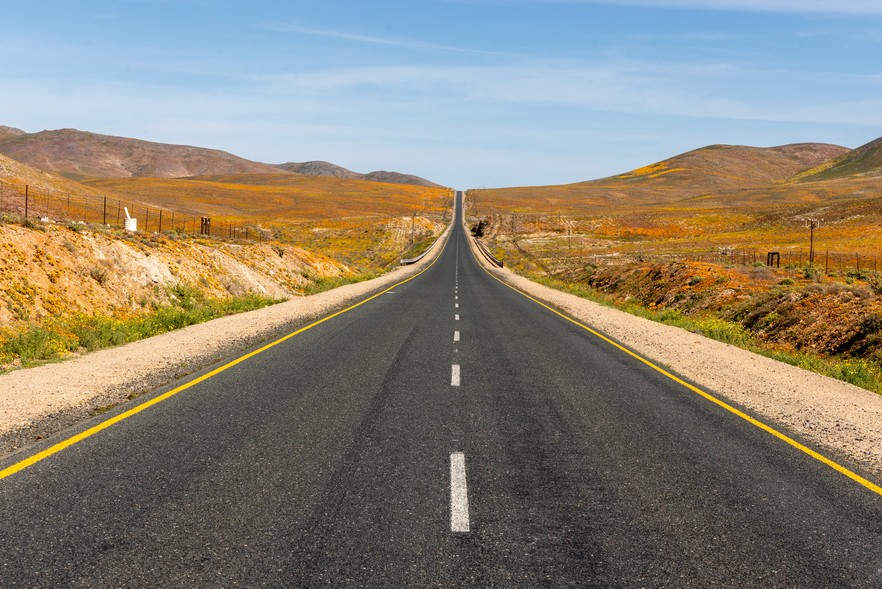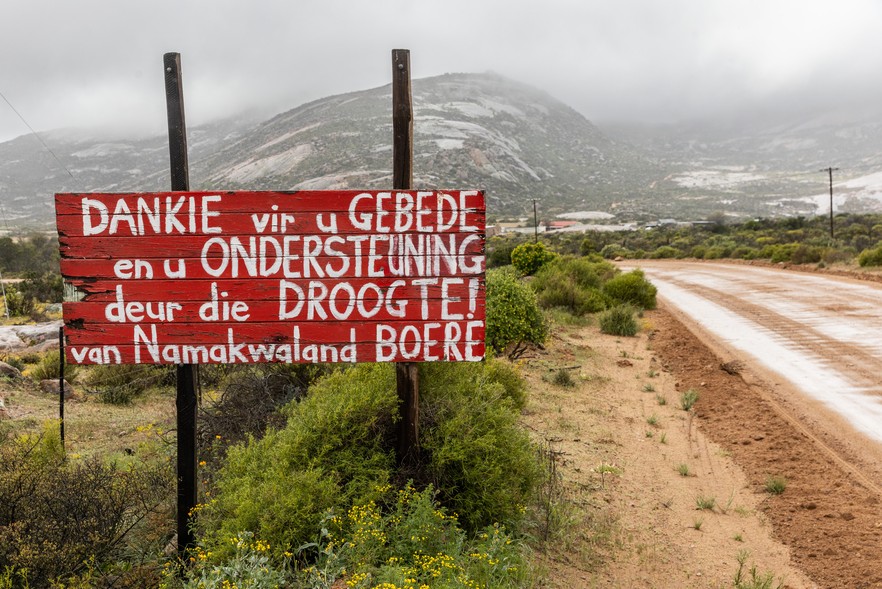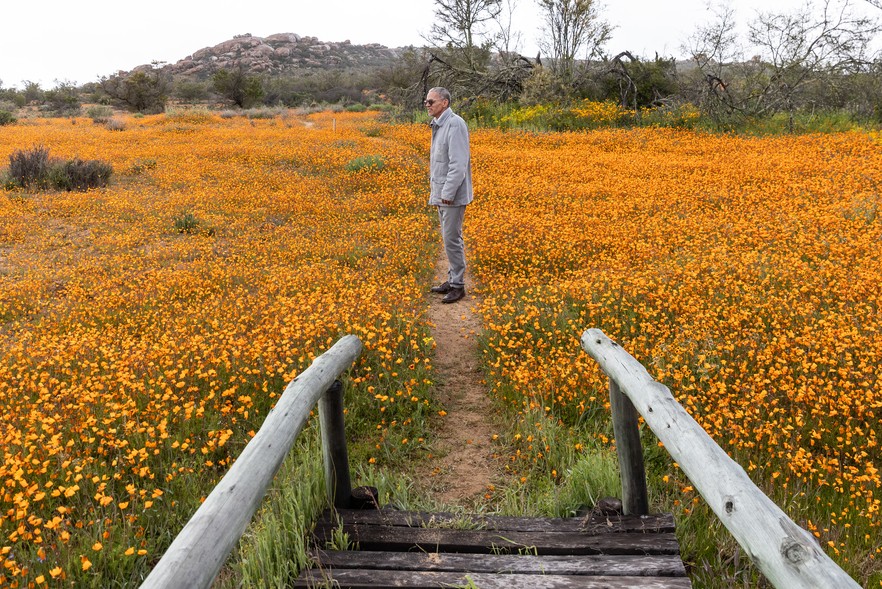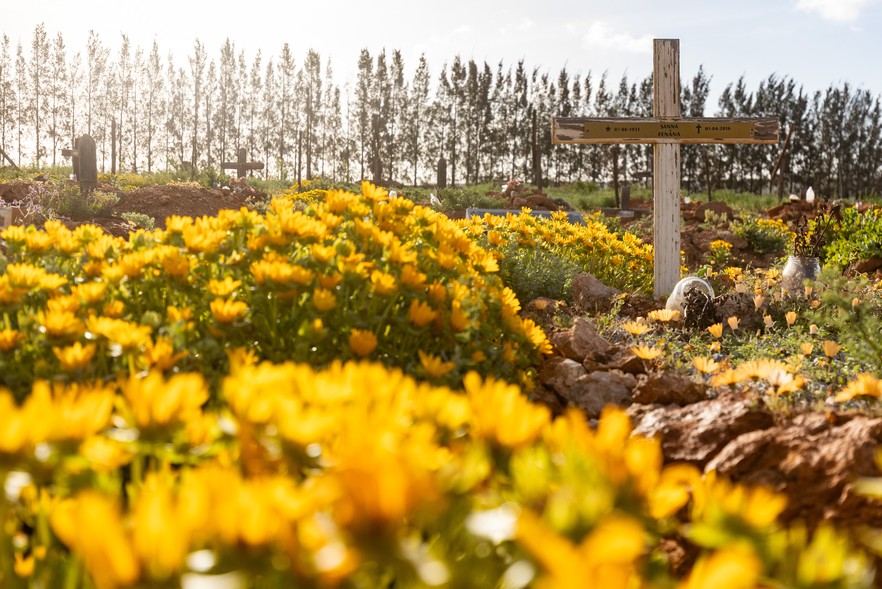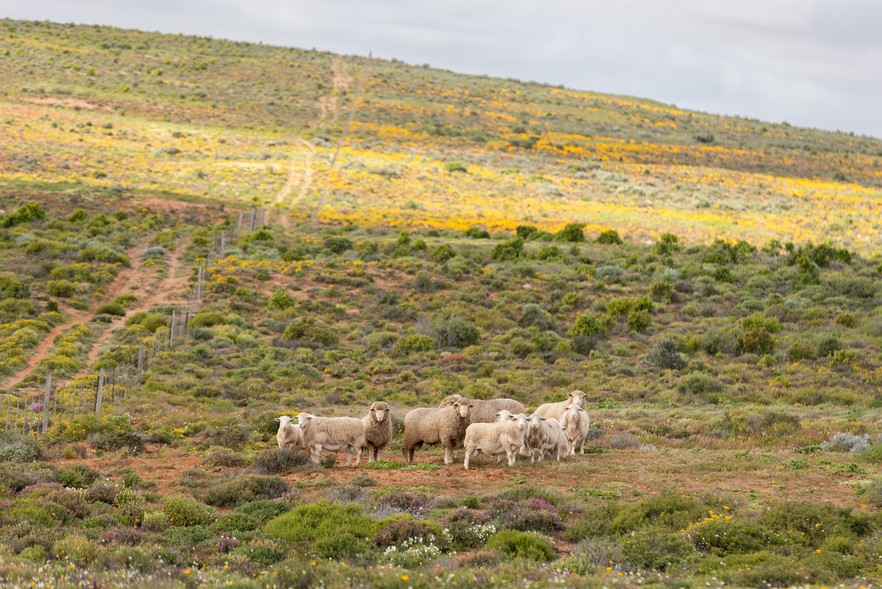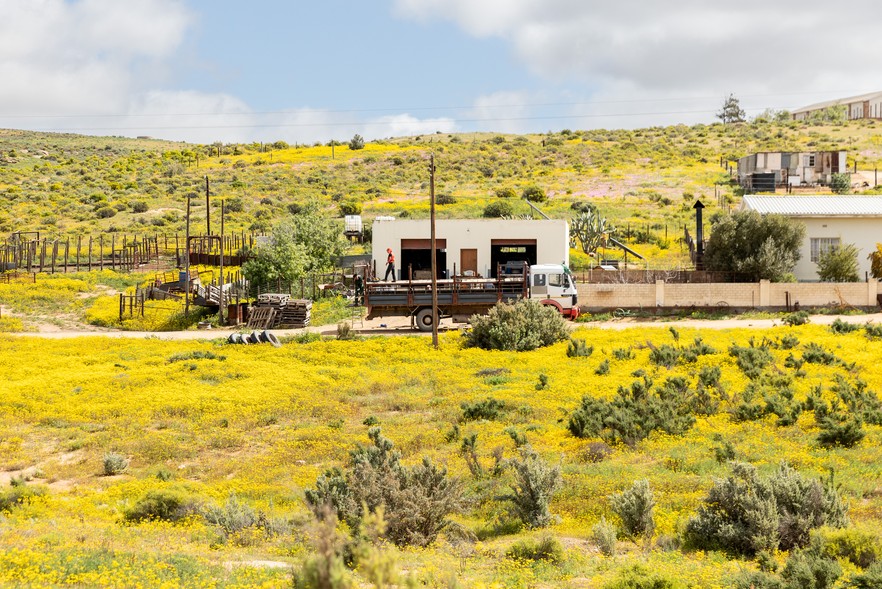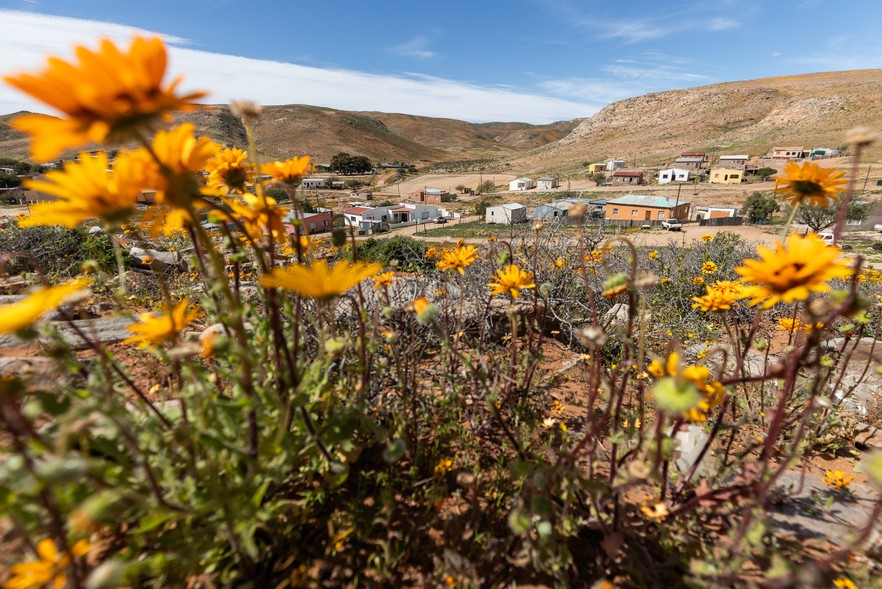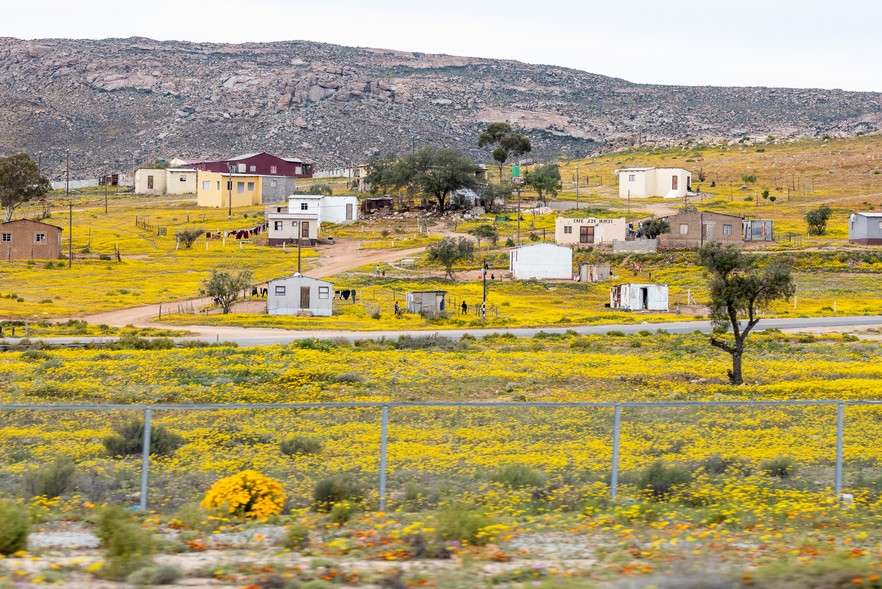In photos: Namaqualand flowers bloom after rainy winter
Rainfall in national park has nearly doubled this year
Wild flowers bloom on the R382 in the Northern Cape.
The Namaqualand National Park has received about 250mm of rain so far this year, which is nearly double its average rainfall, according to South African National Parks (SANParks). The rainfall average is between 120mm and 150mm.
In August and September each year, the hills and valleys of the Namaqualand are covered in wildflowers and daisies. The colourful flowers, many of which are endemic to the Northern Cape and Western Cape, only bloom for a short period in the semi-arid landscape again. The flowers have adapted to the harsh and dry conditions of the Northern Cape, which is prone to low rainfall.
On the gravel road that leads to the park is a sign that reads: “Thank you for your prayers and support throughout the drought! From Namaqualand farmers.”
A sign in Afrikaans thanks people for their “prayers and support during the drought”.
The national park is large, about 146,000 hectares. There are a few hiking trails, a diverse bird population, and over 3,000 different floral species, the “main attraction” of the park.
“The previous few years we had droughts, so the flowers weren’t as beautiful,” says Leonard Cloete of SANParks.
Leonard Cloete looks over the Namaqualand National Park.
He said the flower season is the “most important time of the year” for the Northern Cape. “People from other provinces and other countries come to see the flowers. Their contribution to the economy is invaluable.”
“You can never exactly say when the flowers will peak. We reckon the middle to the end of August. It depends on the amount of rain we get,” he said.
Flowers bloom in a graveyard in Vredendal.
Research by Jennifer Fitchett, Professor of Physical Geography at the University of the Witwatersrand, has found that the Namaqualand wildflowers are flowering earlier each decade.
Fitchett told GroundUp that the flowering was triggered by the amount of rainfall, the timing of the onset of the rainfall season, and temperature.
“The earlier the onset, the earlier the flowering is likely to be. The later the onset, the later the flowering is likely to be,” she said.
Sheep and flowers are plentiful in Namaqualand.
Climate change effects are also a concern in Namaqualand. Events such as the timing of the flowering of the wildflowers, “are one of the most sensitive indicators of climate change,” said Fitchett.
The early flowering broadly points to climate change, she said. In the long term this could lead to a shorter dormancy period which could weaken the flower.
The earlier flowering is also an indication that the flowers are adapting to changing spring times.
Nuwerus was filled with bright flowers.
Flowers bloom in Lekkersing, a small town in the Richtersveld.
A village between Springbok and Steinkopf.
Next: Government needs to innovate if it hopes to address the housing crisis
Previous: Land for relocation of railway line occupiers to be assessed within two weeks
© 2023 GroundUp. This article is licensed under a Creative Commons Attribution-NoDerivatives 4.0 International License.
You may republish this article, so long as you credit the authors and GroundUp, and do not change the text. Please include a link back to the original article.
We put an invisible pixel in the article so that we can count traffic to republishers. All analytics tools are solely on our servers. We do not give our logs to any third party. Logs are deleted after two weeks. We do not use any IP address identifying information except to count regional traffic. We are solely interested in counting hits, not tracking users. If you republish, please do not delete the invisible pixel.

